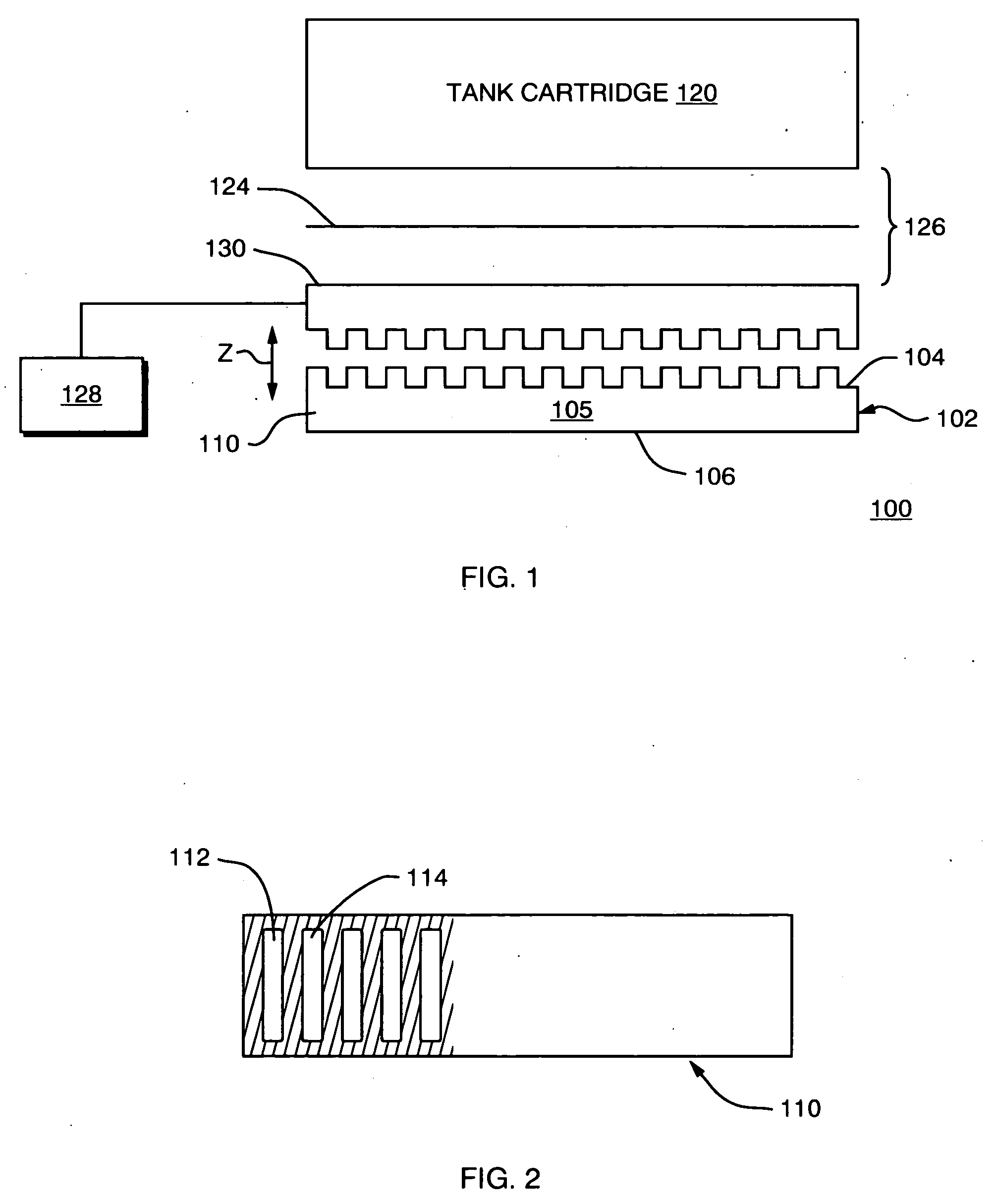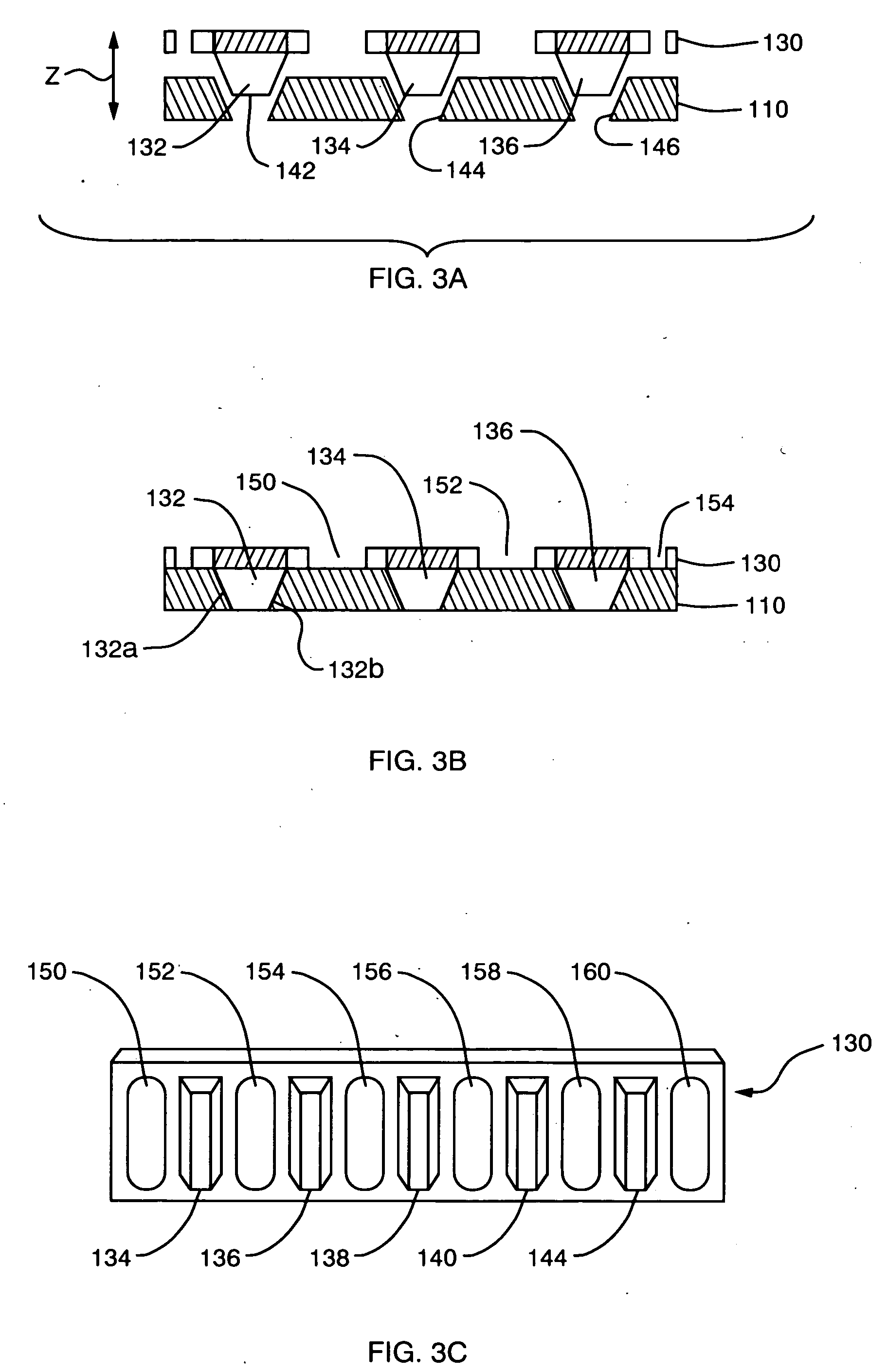Shutter mechanism for fuel cell
a technology of fuel cell and shutter mechanism, which is applied in the direction of fuel cell, solid electrolyte fuel cell, electrical apparatus, etc., can solve the problems of limiting the performance of the fuel cell, reducing the efficiency of the system, and limiting the efficiency of the reformer based system
- Summary
- Abstract
- Description
- Claims
- Application Information
AI Technical Summary
Benefits of technology
Problems solved by technology
Method used
Image
Examples
Embodiment Construction
[0035]FIG. 1 illustrates a portion of a fuel cell system 100, which includes a fuel cell 102 that has a membrane electrode assembly fabricated using methods and materials known to those skilled in the art. Although not shown separately in FIG. 1, a membrane electrode assembly includes a protonically-conductive membrane such as NAFION®, which is commercially available from E.I. DuPont de Nemours and Company of Delaware, United States of America. A catalyst is disposed on or in close proximity, and preferably in intimate contact with each of the major surfaces of the membrane thus forming a catalyzed membrane electrolyte. The catalyzed membrane electrolyte has a catalyzed anode aspect and a catalyzed cathode aspect. Diffusion layers may also be included. Current collectors, typically comprised of an open conductive structure, as described herein, are used to conduct and collect electrons through an external load.
[0036] Fuel is delivered from an associated fuel source or cartridge 120...
PUM
| Property | Measurement | Unit |
|---|---|---|
| protonically conductive | aaaaa | aaaaa |
| mass transport | aaaaa | aaaaa |
| volume | aaaaa | aaaaa |
Abstract
Description
Claims
Application Information
 Login to View More
Login to View More - R&D
- Intellectual Property
- Life Sciences
- Materials
- Tech Scout
- Unparalleled Data Quality
- Higher Quality Content
- 60% Fewer Hallucinations
Browse by: Latest US Patents, China's latest patents, Technical Efficacy Thesaurus, Application Domain, Technology Topic, Popular Technical Reports.
© 2025 PatSnap. All rights reserved.Legal|Privacy policy|Modern Slavery Act Transparency Statement|Sitemap|About US| Contact US: help@patsnap.com



